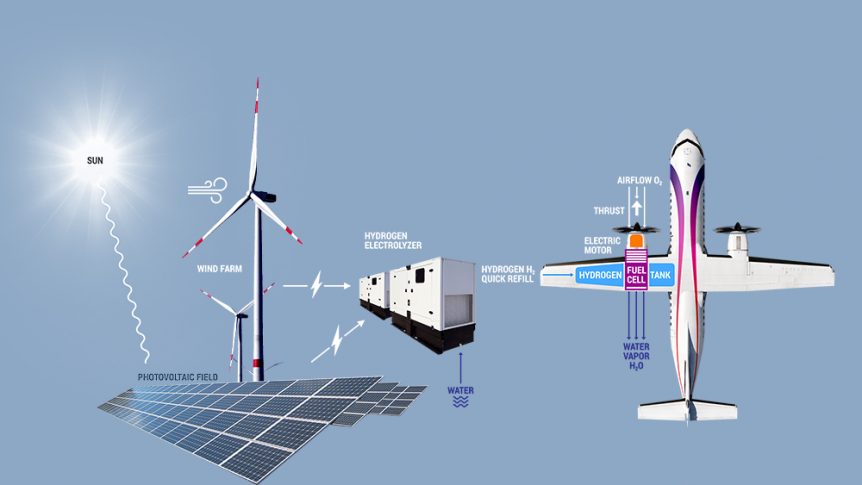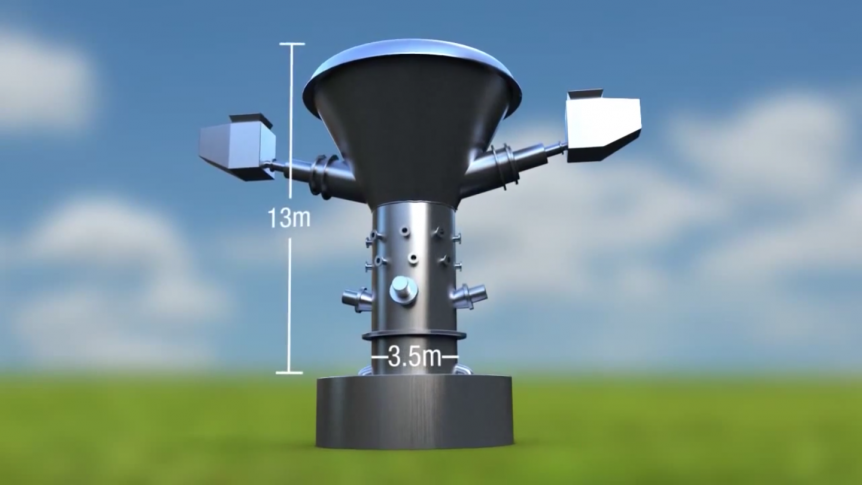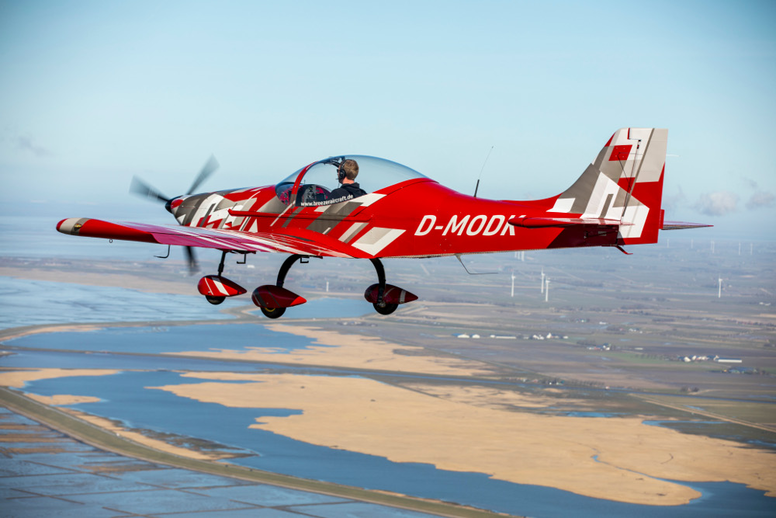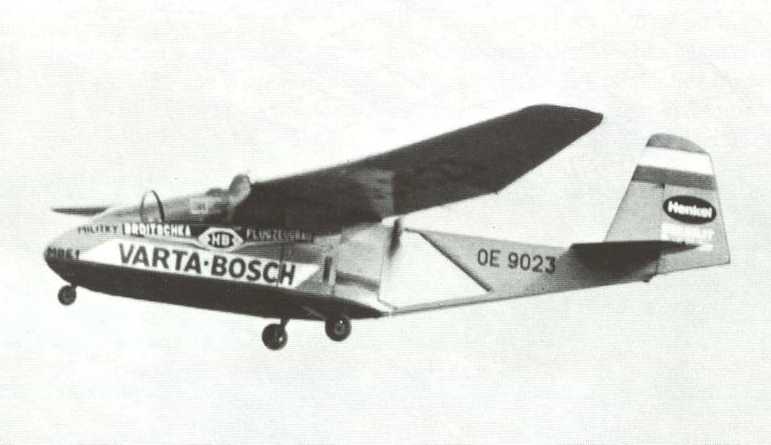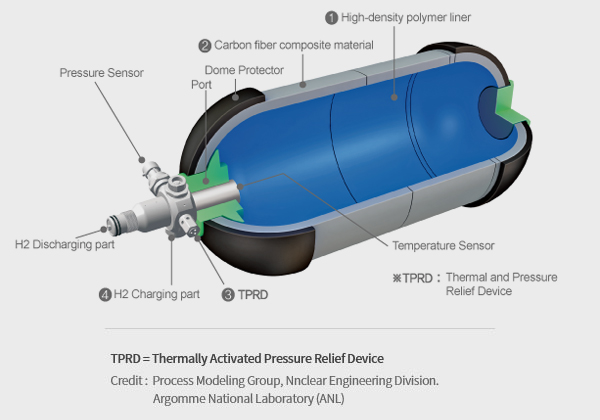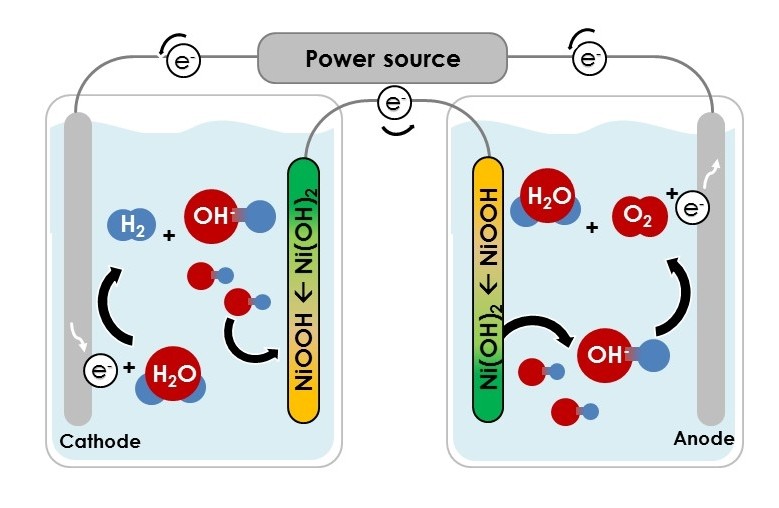Tuesday, June 23, ZeroAvia flew a hydrogen-powered Piper Malibu from Cranfield Airport in England., eight time zones from ZeroAvia’s home base in Hollister, California. Flown by Andrew Dixon, that and a subsequent flight gained extra publicity for “a James Bond stunt pilot*” helming the first electric aircraft capable of carrying passengers from a United Kingdom airport. Dixon reported that the battery-powered Piper Malibu needed 10 per cent less distance for take-off and climbed faster than normal. The Airplane Was the Real Star Reflecting the high-flying status of the test pilot, the airplane, part of a government-funded “HyFlyer” project, flew two missions on two days of 15 and 25 minutes each. Its two automotive-based batteries easily carried the six-passenger aircraft on its tours of the Bedfordshire countryside. The second of two Piper Malibus to be converted by ZeroAvia, the craft will be converted to hydrogen power before an October or November “300-mile flight from Orkney to an airport on the Scottish …
Making Greener-Than-Green Hydrogen
What if we could make “clean” hydrogen from plain water, with none of the problems associated with coal, oil or gas extraction and the waste byproducts produced in extracting brown or blue H2? Several approaches such as artificial leaves have been developed, but a totally different new approach seems incredibly promising. A promising approach may lead to greener-than-green hydrogen. The Race to Invent the Artificial Leaf Varun Sivaram, in his book Taming the Sun discusses how Nate Lewis at Caltech and Daniel Nocera at Harvard “determined to find a way to wring fuel out of thin air.” Each has created an “artificial leaf” that emulates the photosynthesis performed naturally by real leaves. A real leaf is far more complex than one would imagine, and the chemical interactions inside even more so. For all that, photosynthesis is only one percent efficient. “A commercially viable artificial leaf would solve several of the trickiest challenges in clean energy. It would create a way …
Hydrogen from Dirty and Clean Sources
Hydrogen, the first element created from the Big Bang, is the lightest in the periodic table, has the atomic number 1, and is “the most abundant chemical substance in the universe.” (Wikipedia). Until starting this blog entry, though, your editor was unaware that this colorless gas came in brown, blue, and green variants – referring to the methods used to extract h2. Hydrogen can be extracted from some fairly dirty sources, but the dirtiest may lead to an amazingly clean outcome, if we’re to believe what’s happening in Lancaster, California. The Guardian reports, “Broadly, there are currently three ways to make hydrogen. Brown hydrogen is produced when the element is stripped out of fossil fuels such as coal, while blue hydrogen is produced from gas. Green hydrogen is produced from running an electric current through water using an electrolyser powered by renewable energy such as solar.” (A simplified list) Brown H2 from Brown and Black Coal Brown coal has more …
Pipistrel’s Plans Evolve in Exciting Ways
In its 30th year, Pipistrel is making many changes, from a crisp new logo to new emphases and technologies. Its 801, intended for Uber’s Urban Air Mobility program, will segue into a cargo version and return later after the firm gains experience with deliveries. Meanwhile, Pipistrel will concentrate on developing a 19-seat, 300-mile range regional airliner while growing its global outreach for personal aircraft. Pipistrel is evolving and flourishing in exciting new ways. From Hang Gliders to Global Reach Ivo Boscarol, founder, owner and president of Pipistrel companies, CEO of Pipistrel d.o.o. Shares a look at his firm’s three-decade history and plans for the near future. Pipistrel reports in its newsletter, “The information that Pipistrel is running a program developing a large cargo-delivery hybrid-electric UAV in-house is accurate. For this program, we will be communicating about progress on a separate occasion, when we are ready to unveil the exact specifications, purpose and capability.” It will at the same time hold …
Hydrogen Instead of Batteries?
As battery makers worldwide strive to develop safe, high-energy-density cells, Breezer Aircraft, a German small-aircraft manufacturer, unveils plans to power one of its ultralights with a hydrogen fuel cell. Breezer’s B400-6, receiving 600kilogram certification by the DAeC (German Aero Club), is light enough to enable a small fuel-cell-motor combination to power it. Usually powered by the ubiquitous Rotax range of engine, an electric version will initially to be driven by batteries, and then powered by a hydrogen-fuel cell. eCap and Re-Fire eCap, a German company specializing in systems integration and installation for a diverse range of classic and modern vehicles, will work with Breezer on the first installations. eCap’s demonstrated ability to convert everything from an antique farm tractor and classic cars (including a DeLorean) to modern buses and delivery trucks shows their range. Employing state-of-the-art technology and techniques such as reverse engineering leads to 3D CAD models from which ECap develops prototypes. Perhaps most important, “eCap works completely independently of …
Austrians, Swiss, Chinese Launch Three New Electric Aircraft
Three companies with divergent backgrounds launched three new electric aircraft in the last few months. 1973, and Its Descendants are Still Electric As noted in the blurb for its historic YouTube video for its first electric flight 46 years ago, “HB Flugtechnik is the pioneer in electric flight. The world’s first electric powered flight took place on October 21st, 1973 in Austria. 50 years later this company is still in business and doing better than ever. Given, that we talk about the aviation business, this is an outstanding and remarkable achievement. Today, HB Flugtechnik located at the now newly refurbished airfield Hofkirchen LOLH is not only the major MRO (Maintenance, Repair Organization or Maintenance, Repair, and Overhaul) for aircraft in Austria, it is still working on the new frontier of electric flight.” In a 2012 presentation at the AVT-209 Workshop in Lisbon, Portugal in 2012, Dr. Martin Hepperle of the DLR Institute of Aerodynamics and Flow Technology in Braunschweig, Germany …
First Lindbergh E-flight Rally
The Lindbergh E-flight Rally coinciding with Friedrichshafen’s annual Aero Expo will explore the growing capabilities of these amazing machines. The Lindbergh Foundation invites owners of electric aircraft to gather two days before the opening of Aero Expo 2020 to fly over the scenic marvels of Germany, alighting on Expo opening day “around 11 a.m., just on time for the AERO press conference.” The hoped-for en masse arrival would highlight the number of electric aircraft now flying and their reliability. Organizers explain, “Like the first ultralight aircraft did then, the first electric aircraft today need to prove that they already function perfectly.” The two-day aerial cortege would fly “along Lake Constance, and past castles, palaces, and churches, to a first stopover at Regio Airport Mengen, which was recently awarded a contract by the state of Baden-Württemberg for the construction of a test platform for electric flight/autonomous flying.” There, entrants will charge their batteries and head for their second and last …
Hydrogen-powered Drone Makes Ocean Flight
A one-hour, 43-minute flight between a hospital on the Caribbean island of St. Croix and a testing facility on the neighboring island of St. Thomas probably set a record for hydrogen-powered multi-rotor, over-water drone flight. The flight delivered live bacteria samples from a hospital on the Caribbean island of St. Croix to a testing facility on the neighboring island of St. Thomas. The demonstration was carried out by Guinn Partners and associated organizations. Most such medical deliveries are usually over land and within urban areas. Fixed-wing drones flying with Zipline in Rwanda deliver clinical samples and blood 80 kilometers (49.6 miles) each way out and return. The Doosan Mobility Innovations (DMI) DS-30 drone is a large machine able to carry a 10.8 liter, 4.3 kilogram (9.46 pound) compressed hydrogen container – good enough for two hours endurance. There was 30 minutes’ supply left in the tank when the drone landed on St. Croix. The machine can carry up to a …
Technion Splits the Process and Splits Hydrogen Efficiently
Technion is an interdisciplinary technology institution based in Haifa, Israel. Two years ago, it began promoting its unique approach to splitting water to extract hydrogen. One of the researchers on the project won a three-minute thesis contest with her quick and eloquent explanation of photoelectric chemical water splitting, key to the research team’s approach. Point of Sale Delivery The Jerusalem Post reported, “Technion-Israel Institute of Technology researchers have developed a new method for the production of hydrogen from water that uses solar energy in a centralized way at the point of sale, such as a gasoline station for electric cars fueled by the gas.” (Editor’s italics) The article explained, “This eliminates the need for ‘solar farms’ whose hydrogen has to be trucked a long distance, making the process cost effective, safe and efficient.” Published two years ago in Nature Materials, the study was led by Avigail Landman, a doctoral student in the Nancy & Stephen Grand Technion Energy Program and …
Clean Hydrogen from Dirty Sources
Proton Technologies of Calgary, Canada has a startling approach to obtaining clean hydrogen – extraction from some of the dirtiest sources on earth. Considering the company plans to pull hydrogen from fairly filthy tar sands, their Hygenic Earth Energy almost seems like a misnomer. Tar sands oil extraction has been enormously controversial, with issues including arboreal forest destruction, native tribal displacement, and air and water pollution. Proton hopes to ameliorate these problems in Alberta and elsewhere with adherence to this mission statement: “To rapidly transform energy systems worldwide—profitably and sustainably—might sound like a dream. However it is entirely reasonable, perhaps inevitable, if you accept… “Four Key Premises: “1. Hydrogen is the foundation to a sustainable energy future “2. The high cost and carbon emissions from hydrogen production are the only remaining obstacles “3. Proton’s hygenic earth energy eliminates these obstacles “4. The massive existing hydrogen market allows for rapid commercialization.” Testing Their Premises To develop their dream and test the real-world implications …

